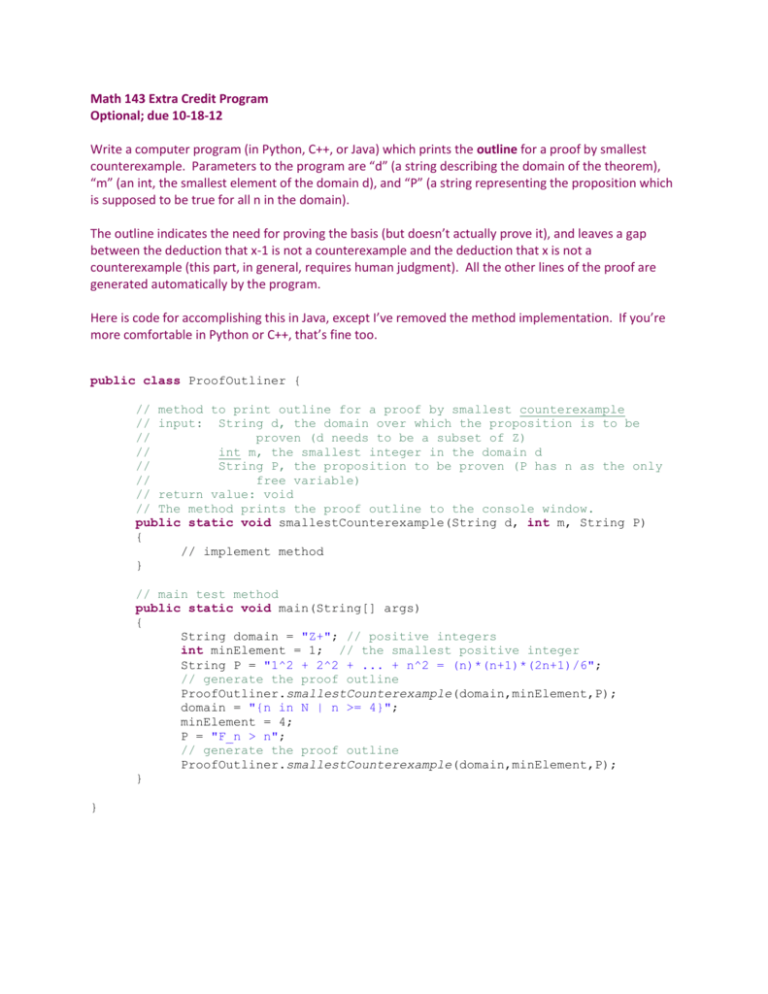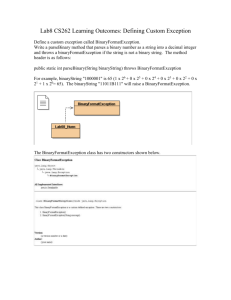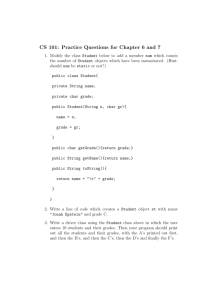Extra Credit Program
advertisement

Math 143 Extra Credit Program
Optional; due 10-18-12
Write a computer program (in Python, C++, or Java) which prints the outline for a proof by smallest
counterexample. Parameters to the program are “d” (a string describing the domain of the theorem),
“m” (an int, the smallest element of the domain d), and “P” (a string representing the proposition which
is supposed to be true for all n in the domain).
The outline indicates the need for proving the basis (but doesn’t actually prove it), and leaves a gap
between the deduction that x-1 is not a counterexample and the deduction that x is not a
counterexample (this part, in general, requires human judgment). All the other lines of the proof are
generated automatically by the program.
Here is code for accomplishing this in Java, except I’ve removed the method implementation. If you’re
more comfortable in Python or C++, that’s fine too.
public class ProofOutliner {
// method to print outline for a proof by smallest counterexample
// input: String d, the domain over which the proposition is to be
//
proven (d needs to be a subset of Z)
//
int m, the smallest integer in the domain d
//
String P, the proposition to be proven (P has n as the only
//
free variable)
// return value: void
// The method prints the proof outline to the console window.
public static void smallestCounterexample(String d, int m, String P)
{
// implement method
}
// main test method
public static void main(String[] args)
{
String domain = "Z+"; // positive integers
int minElement = 1; // the smallest positive integer
String P = "1^2 + 2^2 + ... + n^2 = (n)*(n+1)*(2n+1)/6";
// generate the proof outline
ProofOutliner.smallestCounterexample(domain,minElement,P);
domain = "{n in N | n >= 4}";
minElement = 4;
P = "F_n > n";
// generate the proof outline
ProofOutliner.smallestCounterexample(domain,minElement,P);
}
}











